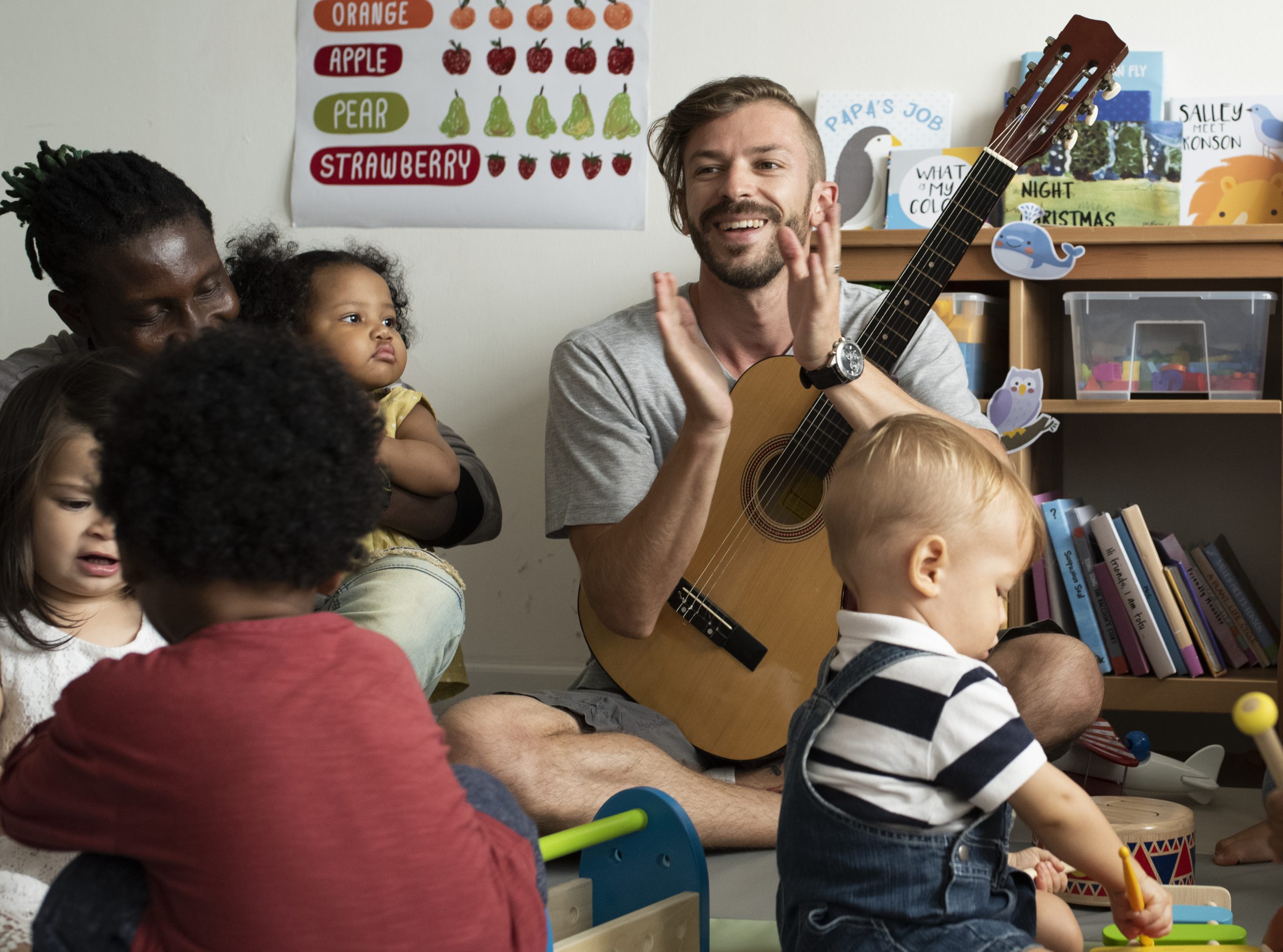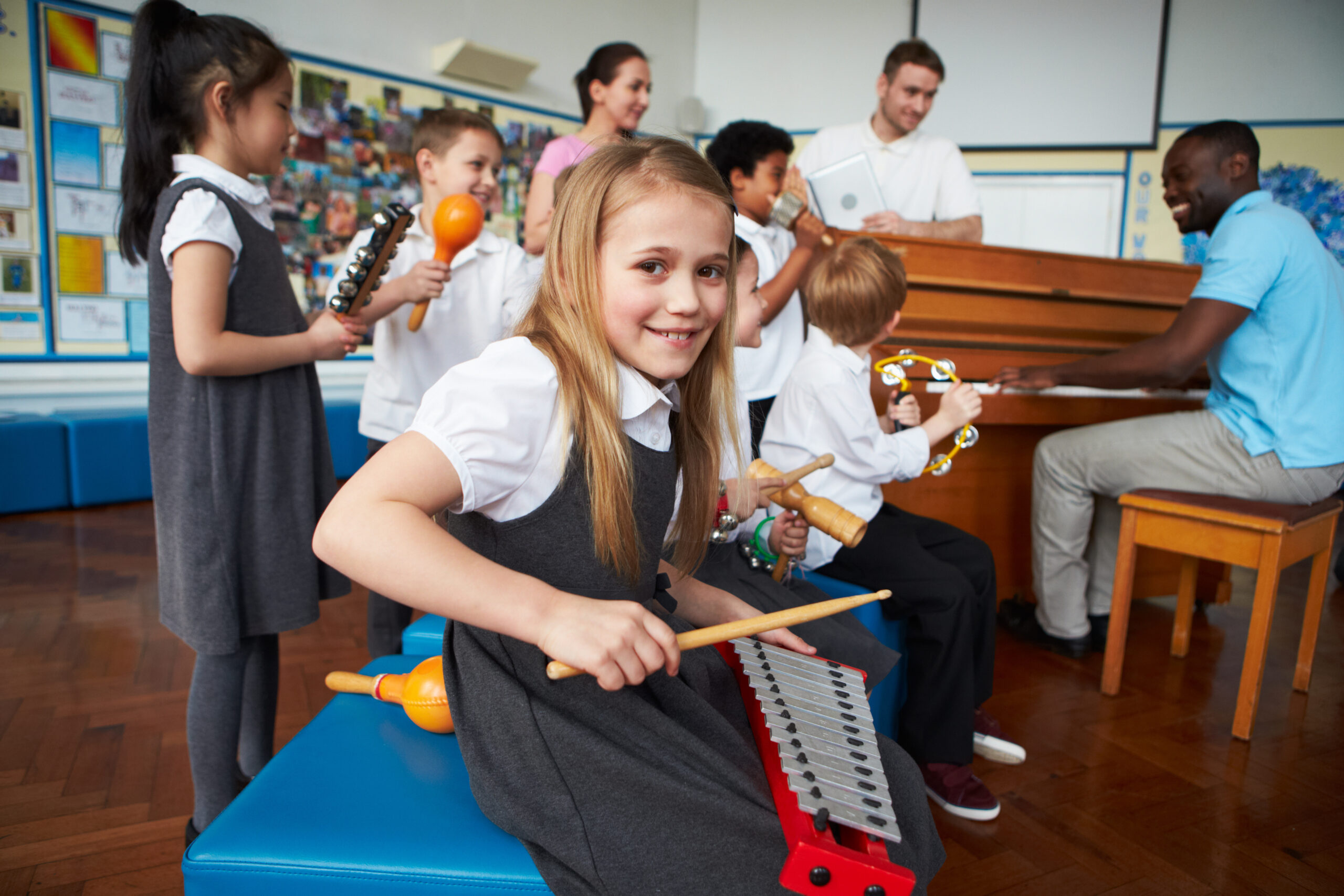
Mix talked to Philip Segers, musician, composer and music teacher. Philip is coordinator of Muzieklabo Inclusief at the Academie Wijnegem. He and his wife share a real passion for teaching students with special needs. Today, around 60 pupils participate in music lessons at the Muzieklabo Inclusief. There are usually two teachers in front of each class.
His secret? Not focusing on the inabilities, but rather on the qualities of each pupil.
How are classes organized in Muzieklabo Inclusief?
Philip: The project started in 2013 as a pilot project financed by the Department of Education. At that time, we got ‘carte blanche’ to develop the project. We opted to work in groups of 8 students with 2 teachers present each time. We maintain the co-teaching principle to this day. Two teachers are required to supervise our groups. This additional manpower comes in handy when unforeseen circumstances arise and is also needed for the necessary guidance in learning to handle the instruments. We now offer individual instrument lessons for those who wish to do so. They are free to choose from: piano, keyboard, guitar, singing, accordion, recorder, and (melodic) percussion.
What can a student expect when he enters the classroom of Music Lab Inclusive?
Philip: Philip: In our group lessons we start with the djembé. There are no desks in the classroom, just chairs and instruments which allows us to sit in a circle and play together. By repeating and playing, rhythmic games and rhythmic exercises, we get the students warmed up. Often, we intertwine movement or songs in these exercises. Furthermore, we allow our students to explore the use of other instruments: melodic percussion, world music instruments, etc. In fact, we are always searching for accessible instruments with greater playability for our special needs students. An essential requirement here is that the instruments have a rich sound. Think of a shrutibox or a handpan. In this way, the exploration of the instruments is a real enrichment for the students, and the particular sound of the instruments also contributes to the musical atmosphere while making music and improvising together. In our lessons we pay a lot of attention to listening to sound and music.
When introducing a new instrument in the classroom, we also provide as much cultural interpretation and background information as possible. Of course, we always approach this in a way that corresponds to the level of our students. A small anecdote here is that of the research our pupils were conducting on the subject of Fado music. Some students put the outcome of their findings like this: “Fado music is music using only two notes, ‘fa’ and ‘do’!”
Can you explain the importance of music creation and improvisation in the lessons of Muzieklabo Inclusief?
Philip: Regardless of how we assemble our classes, according to the educational abilities of students or according to matching personalities, the result is always that our classes are heterogeneuous. This way, improvisation is a method to play music in depth without letting the score get in the way. This doesn’t mean that we do not read notes or write anything down. We use graphic scores or we work by ear. We have noticed that memorising music provides our pupils with a long-term basis for the development of the new skills. Even though it takes a little longer to memorise, once the music has been stored in the memory, our pupils often have acquired it for years.
So, how do students find their way to Muzieklabo Inclusief? Do you have any recruitment campaigns?
Philip: At the start, we actively went out searching for students. We visited institutions and schools for special education to present our project. We published small articles through local communication channels and made a brochure. Over the years, we can say that there is less need to recruit. The knowledge of our existence and how to find us has spread beautifully in the surroundings due to recommendation by word of mouth. This school year we made a new brochure which realised a beautiful increase of student number.
Is there any parental involvement in Muzieklabo Inclusief?
Philip: Usually our students know each other very well. They are often classmates in their school for special needs or they know each other from the institution they reside. Likewise, our parents often know each other. Parents of a child with special needs tend to have contact with other associations as well. Basically, it is one big family all together.
Now our Music Lab Inclusive has grown into a larger project, there are quite a lot of classes and all the help and support we receive from the parents is always welcome.
We love giving concerts. We always make sure that our students shine and that the concerts can be presented in the best possible conditions. We are really proud of this. Once in a while, our parents spontaneously offer to make pancakes and in this small way they contribute to the wonderful ambiance. The students always really look forward to the concerts, they really thrive on them.
How do you involve other colleagues at the academy in the project of Muzieklabo Inclusief?
Philip: Sometimes we still notice a barrier. Most of the instruments are taught by the teachers of the group classes belonging to the team of Music Lab Inclusive. Only a few instrument teachers from our academy participate in our project. To support them, we try to communicate with these colleagues as effectively as we can. We realise the importance of good communication amongst the entire teaching team in order to overcome the barriers. Teachers often feel very insecure towards working with pupils with special needs.
Do you have any ideas on how to work with students with special needs?
Philip:
- Cultivate presentation moments. A good focus for this is: Think about the potential of the students and how can we express it in a beautiful way?
- Let the students thrive. No matter how limited the student is, go for the maximum musically.
- Do not lose interest in finding instruments with plenty of possibilities. Key factors are easy playability and high-quality sound.
- Be flexible and have the courage to raise questions. Try, together with the student, to find adaptations regarding the playability of the instrument. Is there another way of handling the instrument? Is it possible to adapt the music score? The answers will be different for every student.
- Improvisation is a powerful way of learning. What do we express with the music we make? How does this music sound? It is learning with ‘open ears’.
- Try to engage parents and colleagues. The result will be a satisfying collaboration and a lot of helping hands in guiding your students!
Like to read more about the methods used by Music Lab Inclusive?
Read about it in these articles:
Concentration games on the djembe





